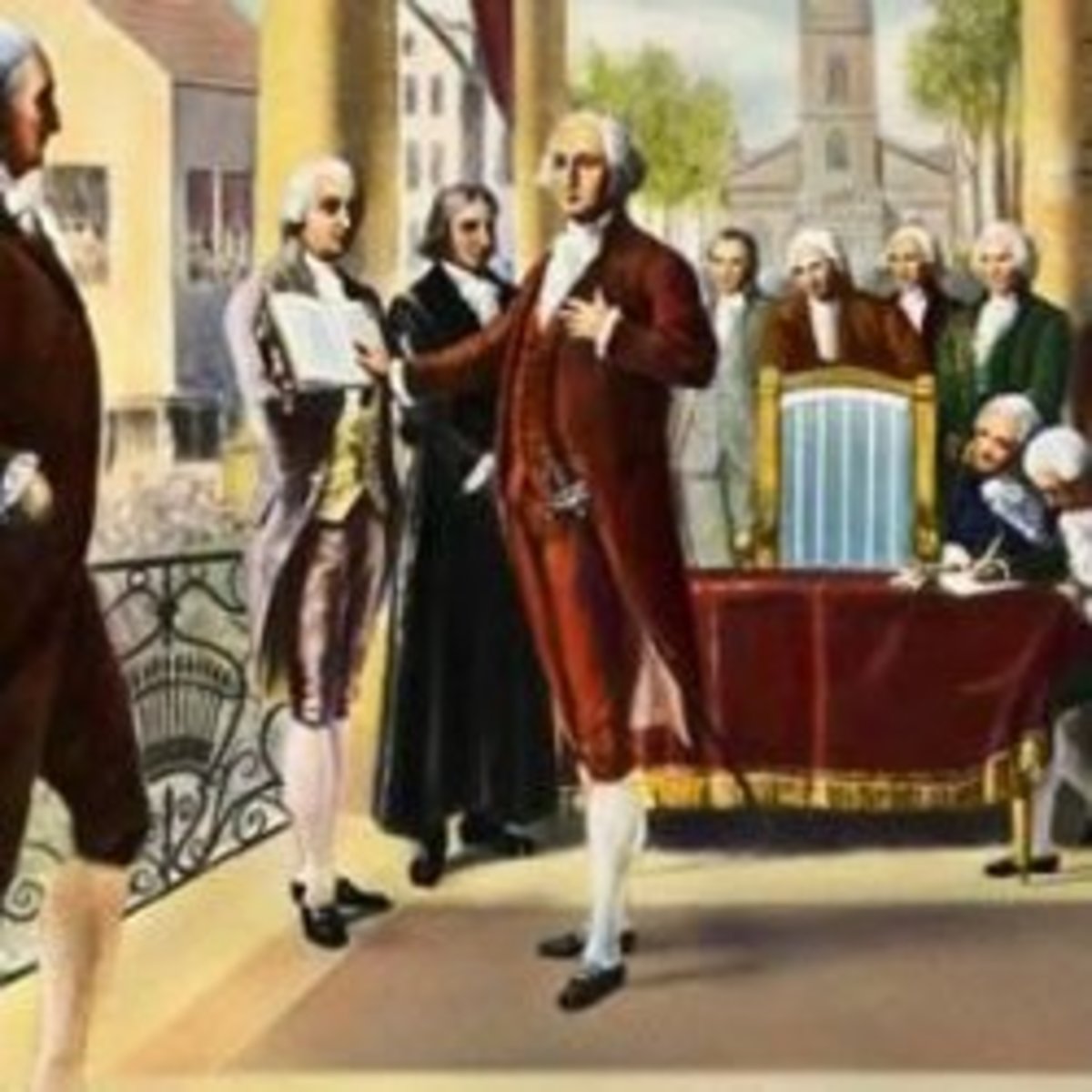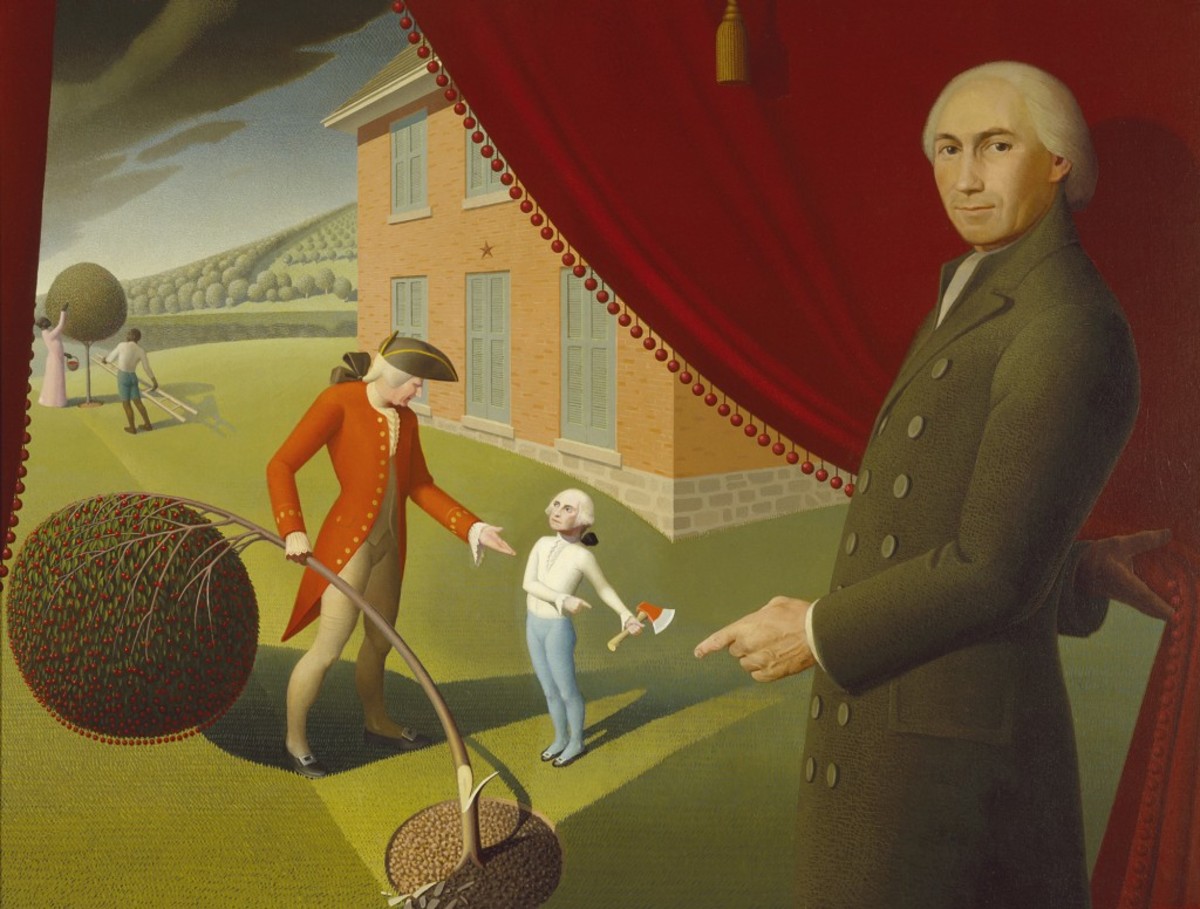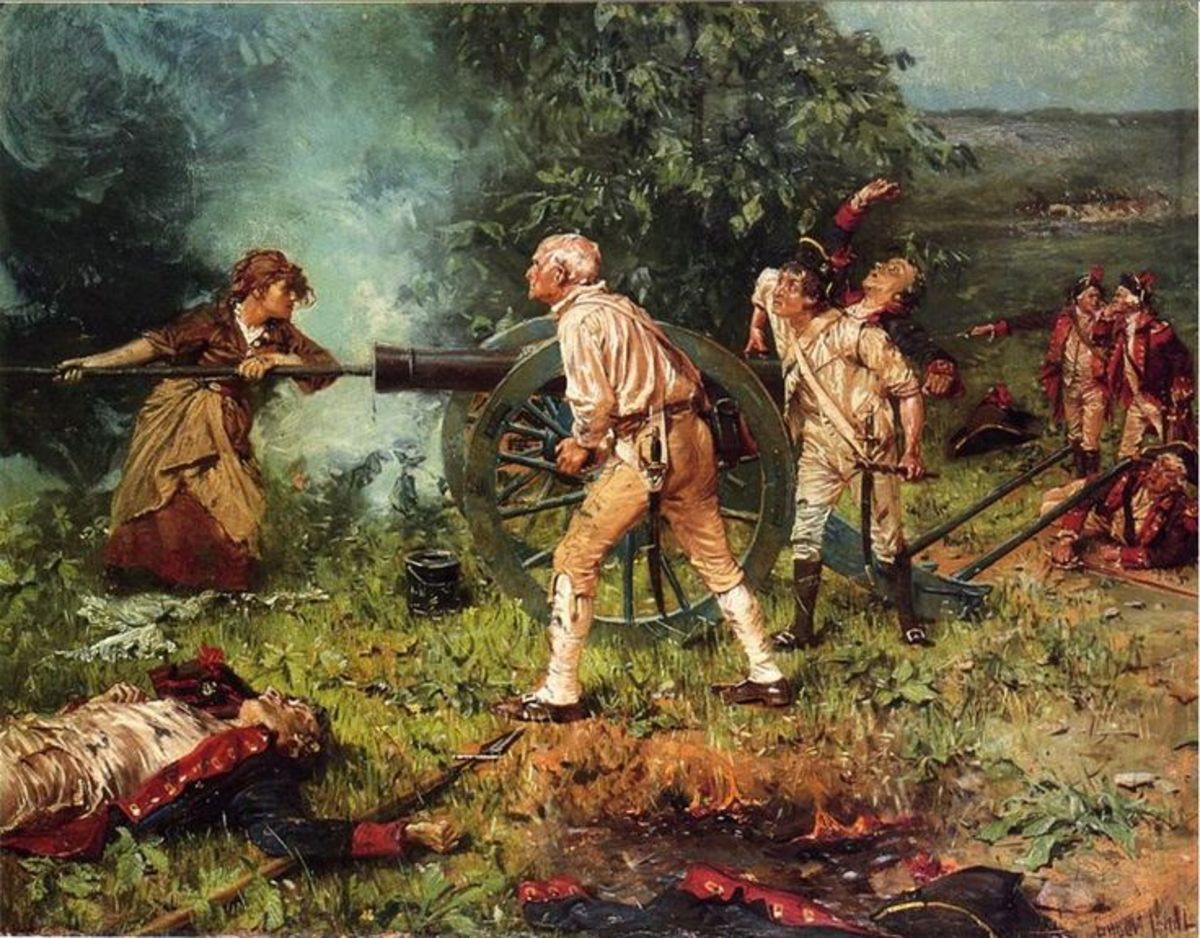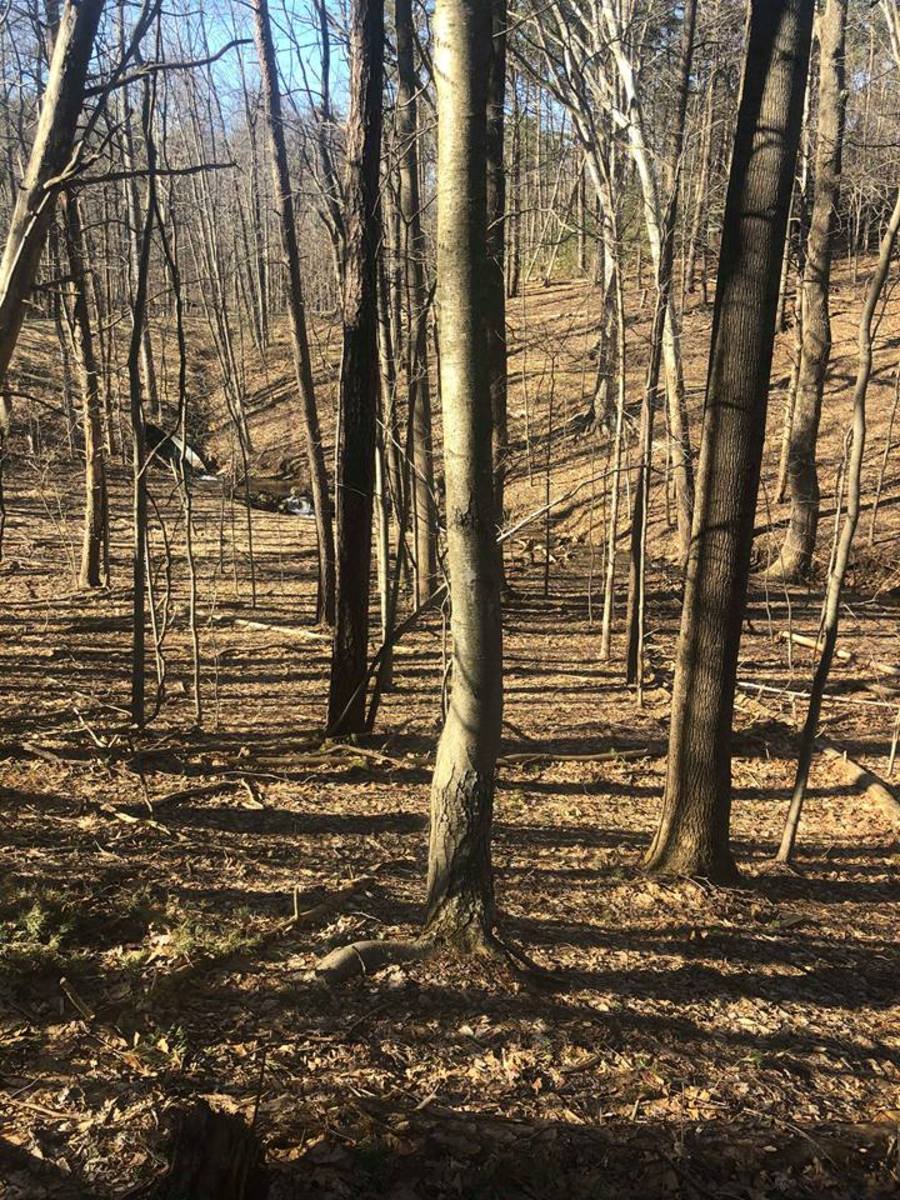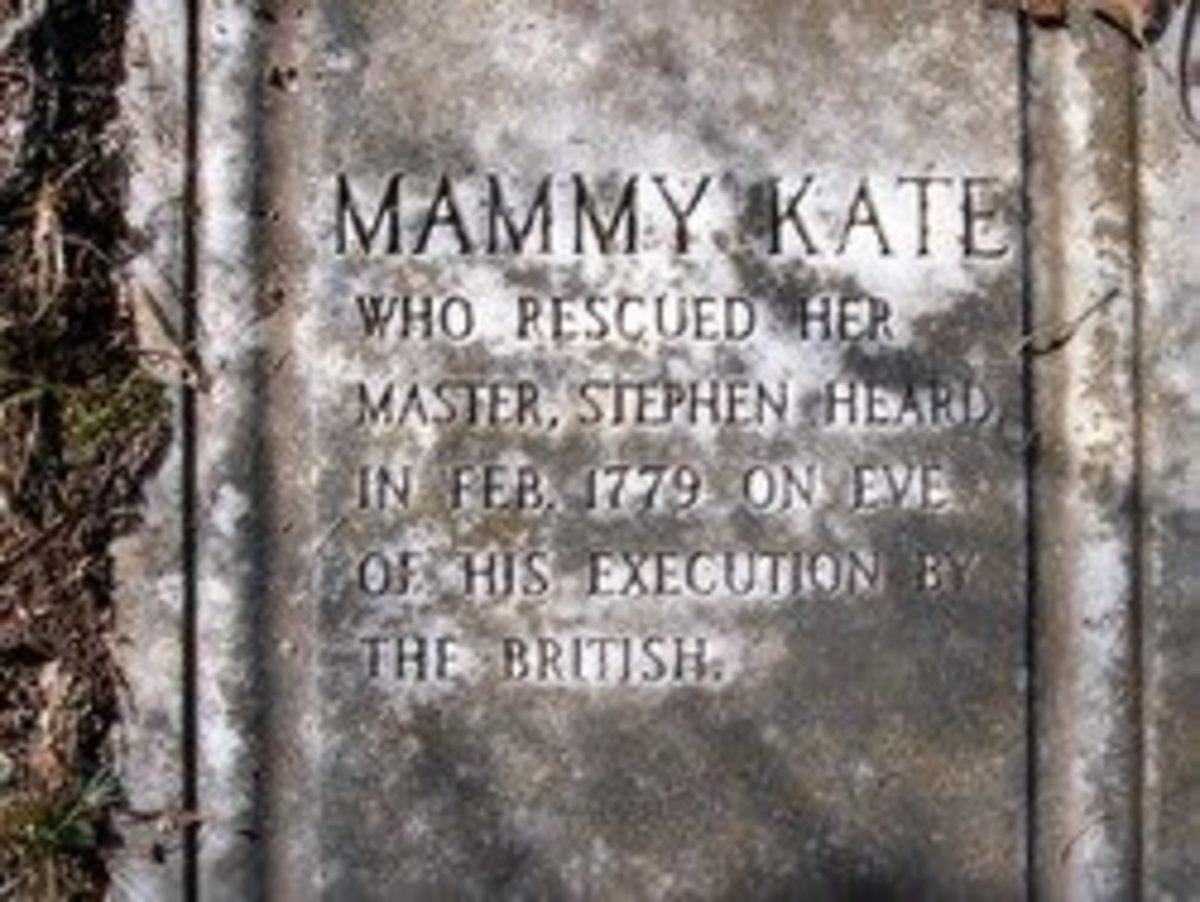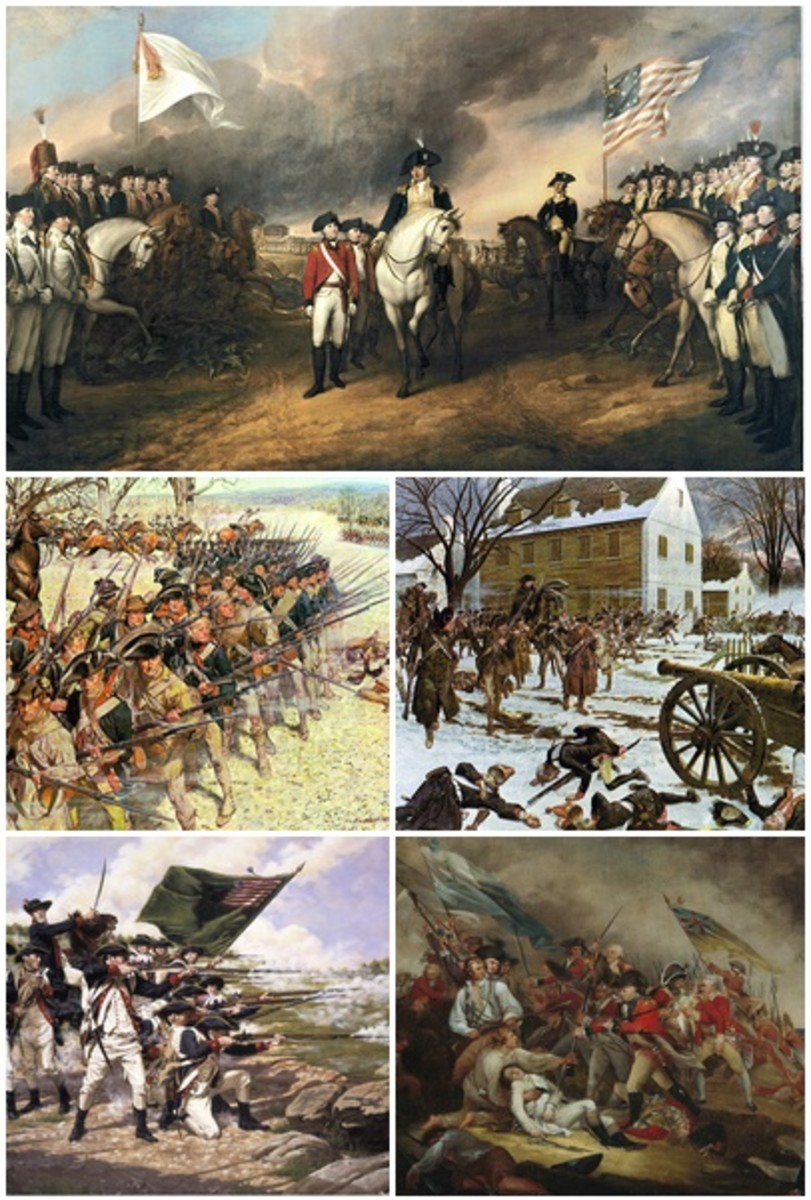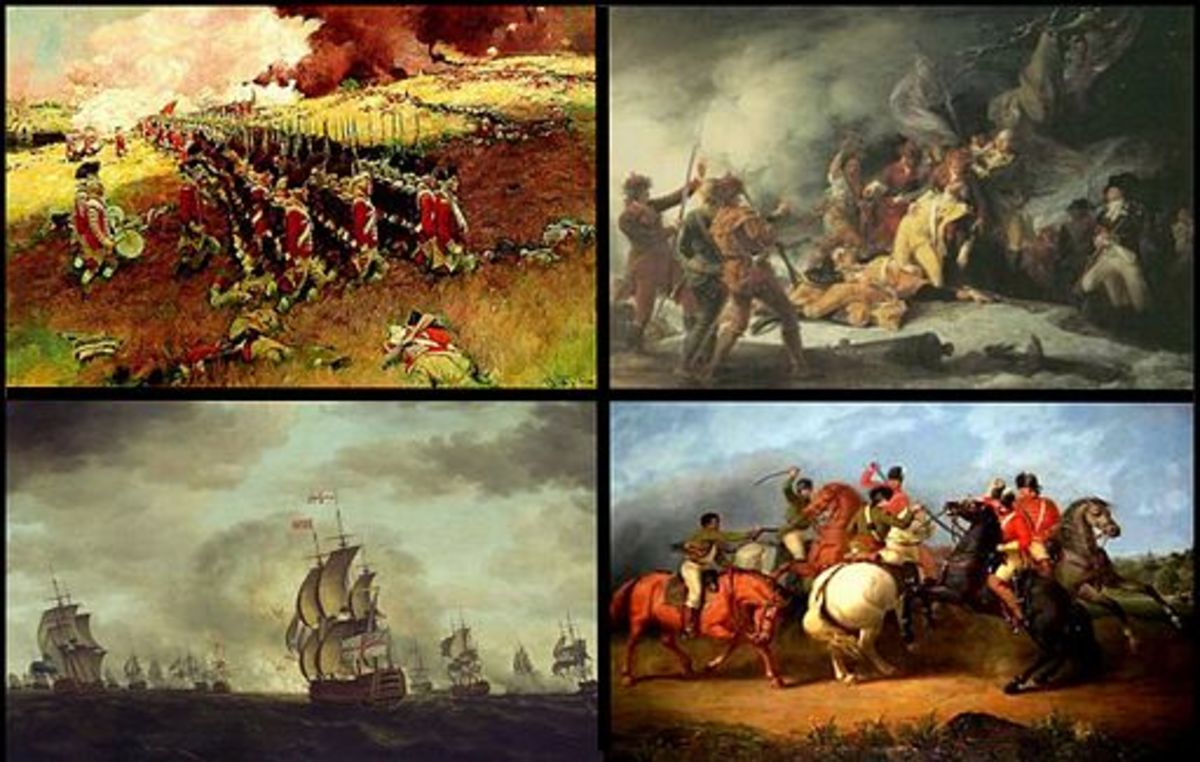- HubPages»
- Education and Science»
- History & Archaeology»
- History of the Americas»
- American History
The Bill of Rights, George Washington, Whiskey Revolution, and a History Lesson

Bill of Rights
The Bill of Rights, which went into effect on December 15, 1791 was established as the beginning of America's separation from Great Britain permanently These are YOUR rights as Americans.
Below are the rights that I consider to have had the biggest impact, and helped with my upbringing in my family. In this section I will explain how these rights are perceived by children, as opposed to when we are adults:
- Freedom of Religion – As we are now, were able to practice in the faith that we find most resembles our family and values/morals. As we enter adulthood the freedom of religion allows us to choose for ourselves what or who we want to believe.
- Freedom of Speech – We are able to voice our opinions, or tell someone what we think they’re doing is wrong. As we grow up into adulthood were able to have more confidence in our speaking abilities, thus we can participate in demonstrations or other forms of activism.
- Freedom of the Press – We are able to share our views of the world via the internet or in newspapers as of now. When we are adults we will be able to communicate with a more diverse audience which means we’ll need a more global form of communication.
- Freedom of Assembly – We can assemble ourselves into small groups; sports teams and friendship circles. As adults were able to form work groups, or assemble for a meeting or an important event.
- Freedom of Petition – We can petition our parents to allow us to go to the movies, hang out with our friends, or hang out with our significant others. As adults we can petition our boss’ for raises or confirm with our legislators the best course of action for our state.
References:
Cassutto, G. (n.d.). Explanations of the Bill of Rights. Retrieved May 1, 2015, from http://www.cyberlearning-world.com/nhhs/compapps/workshop/billofrights/explain.htm

George Washington - Our Nations First President
George Washington, our first president set the standard for how we run our government today. After the American Revolution Washington was inaugurated as president on April 30, 1789 (George Washington). George Washington was elected unanimously by the American public, while the country was struggling to pull itself back from the war with Britain. However as a whole, Washington didn’t do much as a president by today’s standards. He displeased of political parties, which were later to be known as Democrat and Republican (Ten Facts About Washington’s Presidency)
As the first two years of Washington’s presidency went by, he felt he could serve one more term without being a dictator or turning America into another monarchy. Like all presidents he also had his discrepancy. In 1791 he signed a bill into congress passing a tax on distilled spirts, this angered many Americans and caused the Whiskey Rebellion. Faced with a possible uprising in his newly devolved country, Washington invoked the Militia Act, “summoning local militias from sever sides to put down the rebellion.” (Bio) He himself marched into the battles with his armies, where they quashed the uprisings. Towards the end of his presidency, he said in his farewell address that, “avoid partisanship and permanent foreign alliance.” (Bio)
Our first commander-in-chief paved the way for how our government functions today, where Washington spoke adamantly about not allowing power corrupt him. Though the people wanted and begged him to serve longer, he refused seeing that a longer term is too close to monarchy. Throughout history the constitution has been re-written and interrupted in modern context, but we still hold dear to our founding fathers who drafted the original document. Washington was a symbol of America and where it was headed, a nation of thirteen colonies steamrolled into the diplomatic powerhouse we know today, as the United States of America.
References:
Ten Facts About Washington's Presidency. (n.d.). Retrieved April 25, 2015, from http://www.mountvernon.org/george-washington/the-first-president/ten-facts-about-washingtons-presidency/
George Washington. (n.d.). Retrieved April 25, 2015, from https://www.whitehouse.gov/1600/presidents/georgewashington
Bio. (n.d.). George Washington. Retrieved April 25, 2015, from http://www.biography.com/people/george-washington-9524786#retirement-and-legacy

Whiskey Revolution - Causes and Effects
The Whiskey Rebellion was the 18th century version of prohibition, however this rebellion was about their spirits being taxed. America had come out of a bitter and costly was with Britain, and they needed to get money and quick before some other European power would attack the US (Slaughter) The rural part of the country in particular didn’t like this idea one bit. Thus the protests began. Sparse and few at first, but quickly grew in size as the notion of taxation on spirits was spread throughout the colonies.
Like with any decision that’s made by the government that a large portion of the populace doesn’t like, they’ll protest against it. However, these peaceful protests turned into violent protests as they started breaking into store fronts and raising havoc in Pennsylvania. Washington soon realized that a once normal and easy commodity to obtain before the war with Britain for the most part, has now become harder to obtain by the poorer class due to the tax. Then the angry protestors formed bands of militia men ready to get back their spirits, which prompted Washington to sign the Militia act of 1792 into congress, state militias to quash the Whiskey Rebellion (Bio)
The rebellions were put down eventually, even faster when the commander and chief was on the front lines. The start of the physical altercations between rioters and soldiers was brutal an savage, as more and more people joined in the fighting started to resemble that of the revolution they just got out of. That was when the Commander-in- Chief himself dawned on his coat, grabbed his sword and pistol, and marched to the center of the riots leading his battalion of revolution veterans. Many of the rioters seeing their commander-in-chief quickly dropped their weapons and surrendered without firing a shot, while some decided to fight it out to the death and were subsequently overwhelmed and cut down.
The Whiskey Rebellion proved that America was starting fresh, and if they had to start fresh they had to do things that they weren’t used to. As a new nation they had to take care of themselves. Since America didn’t really have any long standing allies, they had to get their own revenue from their existing populace (Slaughter) The effect of this proved that the American public loves their spirits, and they’d raise al hell to get it back.
References:
Bio. (n.d.). George Washington. Retrieved April 25, 2015, from http://www.biography.com/people/george-washington-9524786#retirement-and-legacy
Slaughter, T. (n.d.). Friendship Hill. Retrieved April 25, 2015, from http://home.nps.gov/frhi/learn/historyculture/whiskeyrebellion.htm

Lets have a History Lesson! - Lesson 1: 1850 - Reconstruction Era
-
Two Americas
As the middle of the 19th century rolled through, the influx of travelers from your Europe to America was increasing ten-fold. No longer was America just for American’s or their British cousins, everyone was flocking to America to see how this young country was indeed doing after a war. Many of the travelers were amazed at the beauty of America and its elegant landscapes and buildings. America wasn’t as booming as other nations but its old charm was something that couldn’t be ignored. Most travelers left with a sense of awe, as they could see America was rapidly expanding little by little.
-
Lands of Promise
As the trains and railroads were being stretched across the plains of America, so too was the industry of America. Both North and South were working together helping each other bring in resources to help the country as a whole. People were able to virtually go as they please and not be bound by any laws or regulations. The “Land of the Free” was becoming the land of opportunity in the late 19th century. America and her people grew her attention grew across the world, promising others a new way of life and a fresh start in the new world, in America.
-
Slavery and Secessionism
Slavery was a hot topic for both the North and South, who engaged in the barbering and usage of slave labor. Particularly the richer you were the m ore slaves you could own, thereby increasing your profit ten-fold. America was built upon the labor a slaves and without their assistance in production, America wouldn’t have grown as quickly as it did. Furthermore, slavery was more prominent in the South since that was the agriculture area of America. Despite slavery being unlawful in America and worldwide, we still see segregation or disguised racism in our television programs that pokes fun at blacks’ and their culture.
-
The Abolitionists
The Abolitionists Movement was geared towards the eradication of slavery. William Garrison published a newspaper, “The Liberator” to awaken the sleeping public about the horrors of slavery. To many this was the first phase towards the abolishment of enslaved peoples. Many of the older generation of Americans viewed that slaves were an essential part to the economy, while the current generation wanted to change this mindset. Congress was also in the hot seat, as both abolitionists and non were arguing their points whether to keep the slave system or to get rid of it, with keeping in mind how would America continue to maintain its growth without help from laborers.
-
Texas War with Mexico
The war over whether or not Texas could retain position of the Reo Grande River, as well as individual statehood wasn’t an idea Mexico liked. As the “Manifest Destiny” continued in America, Mexico was determined to gain back its territory that the Texans possessed. Tensions grew into all-out war between the US and Mexico which proved to be a training ground for troops and officers. When the war finally ended those same troops and officers went on to form and command battalions in the Civil War. America also needed to show the world that it could defend its territory properly, sending a message to other nations that America is well defended.
-
The Compromise of 1850
Slavery continued to be an on-going problem for both the North and Southern states. The North viewed slavery as evil, while the South viewed it more of an opportunity for advancement and development of the society as a whole. With the country beginning to gnash teeth at each other, Congress had to make a move before things got out of control. The compromise allowed states that were deemed “slave-prohibited” and “slave state” allowed for the people to either have slaves or not. This solution didn’t last long since many states had boarders with in them, where certain counties allowed slave labor while others didn’t. The North detested this compromise and wanted it to be revised, but the Southern states were content with the results.
-
A Divided Nation
With the American people not happy with the compromise set by congress, those for and against slavery made their opinions heard. Presses argued their views which were distributed onto the people, making them more furious when political leaders who were against slavery before the compromise were now for slavery. Accusations followed suit and parties were formed out of the old Whig party, the Republican Party, “demanded slavery be excluded from all territories” was trying to win the favor of the American people. Even the court systems which was dominated by southerners scoffed the Dred Scott decision for he grounds that the defendant was black, which angered the Northern states whereas the southern states saw this as a triumphant victory for justification of slavery.
-
Secession and Civil War
Shortly after President Lincoln swore into office, he appealed to the people to wend these heated debates but his cry wasn’t heard. The shelling of Fort Sumter was the response that this was not over. Soon after the slave-holding states of the south banded together under the Confederate States of America with Jefferson Davis as their president. The boarder states were unsure who to support, so a line was drawn between those for and against the Union and brother and against brother were pitted against each other. The South though not superior in manpower or resources as the North, had to its advantage experienced military leaders and a long standing tradition of military doctrine. The North decided to fight the South on their own turf, which the South has grateful for since geography they knew the land better and could hold out longer. The bloodiest war in American history ever since was fought in as little as four years.
-
Gettysburg to Appomattox
The push from both sides to end the war with a decisive battle was clear, both sides wanted an end to the war. The battle of Gettysburg was Lee’s full-fledged strike against the Union but they were repulsed despite their gallant charge. The battles that followed suit were atrocious and vicious in nature as the desperation settled among the men. Lincoln tried to ensure the people that the war would be over soon, but with so much death and despair an end seemed far away.
-
The End of Reconstruction
With the Civil War over the nation had to rebuild together, although that didn’t happen. The North was still devastated by the war and was forced to pay recompense to the destruction of the Union, as well as blacks who were enslaved. An already poor and struggling class, was now forced to make up the funds with little support from their wealthier northern compatriots. The Southerners still held onto their traditions by segregating schools, and intimidating blacks who tried to run for office or voting. This reconstruction era in America was an utter fail, and as consequence we have to pay for their mistakes.
-
Peace Democrats, Copperheads, and Draft Riots
Democrats at the start of the Civil War viewed shedding blood in order to free blacks, wasn’t worth dying over. With more men being killed on the front, drafts were being imposed in both North and South to reinforce their armies. Anyone could buy themselves out of the draft by spending $300, which worked well for the rich and not so for the poor. Immigrants from Germany and Ireland feared that the influx of Black’s fleeing to the North, would cause more instability amongst Northerners. People were becoming sick of the death and the needless need for more men to throw at the enemy, so riots and protests began to surface many leading to violence, lynching’s, and shootings.
Topics can be found for more research via: Chapter 6: Sectional Differences

